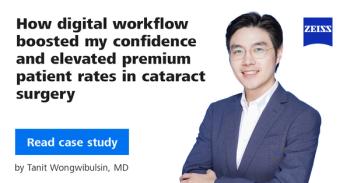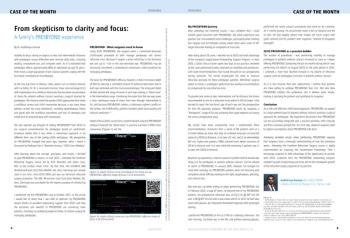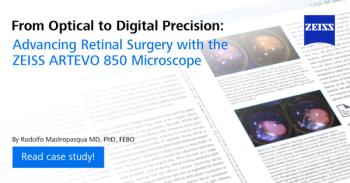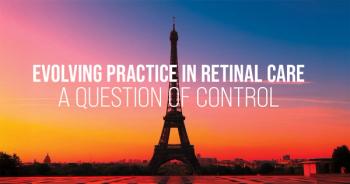
Upgrading cataract surgery skills – Unlocking the full potential of surgical video review using an AI-based application
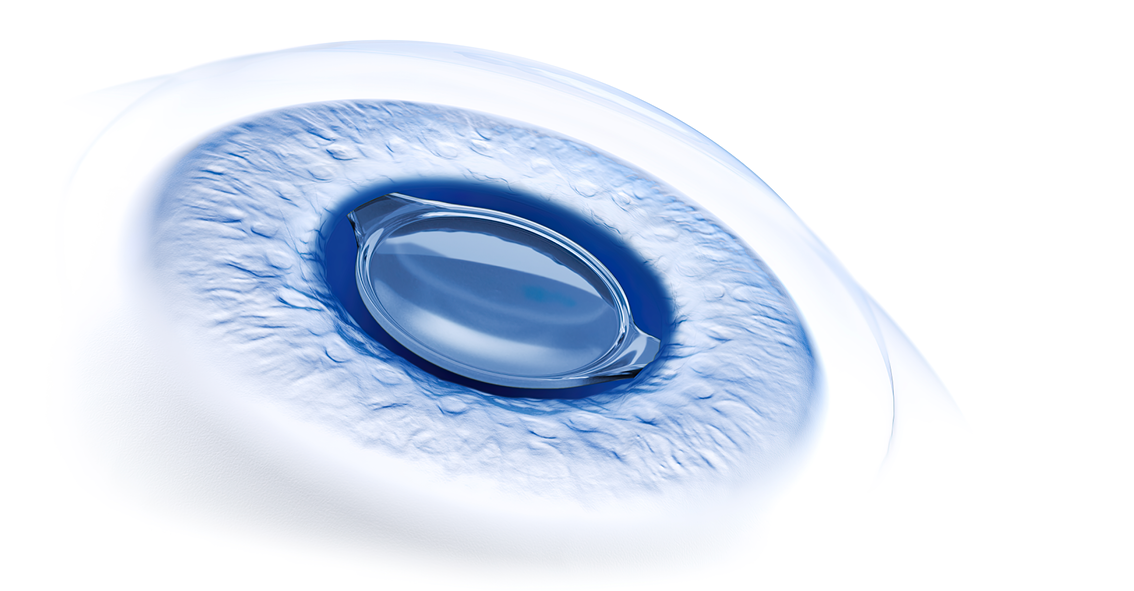
As a young ophthalmologist in my early years of practice, I am always asking myself, how I can do my best for my patients. Improving my skills in performing cataract surgery has been one area of focus for me, and there are a variety of modalities that I could consider to help me achieve my goal. The ZEISS Surgery Optimizer offers a new option, and I was excited when I was asked to trial it in my practice.
The ZEISS Surgery Optimizer
Cataract surgeons certainly know that reviewing personal intraoperative videos is a useful method for improving efficiency and skill because it allows us to see what we are doing well and identify areas where there is room for improvement. In addition, watching recordings from surgeries performed by recognized experts can be a powerful learning tool. Based on the concept of “monkey see, monkey do”, the hope is that after observing cases done by the hands of leading surgeons, we will be able to replicate their tricks and techniques and improve our skills.
The process for reviewing intraoperative videos requires that surgeons have a good microscope, a good recording system, and technology for transferring and watching the videos. Surgeons operating in modern facilities have access to the first two components of this triad, but exporting the recordings to a device where they can be reviewed has been a cumbersome, multistep task that discouraged surgeons from taking advantage of the benefits that could be gained from video review. Once recorded, the video file needs to be transferred to a USB drive and then to a desktop or laptop computer, but that transfer could be slow and time consuming considering the large size of the video files.
The ZEISS Surgery Optimizer revolutionizes the entire process by providing a way for surgeons to access their surgical videos anytime on their personal devices without having to manually export and import the files. With the click of a button, videos are imported from ZEISS CALLISTO eye, a digital navigation and data management system of ZEISS ophthalmic microscopes, to a cloud-based software system. Once imported, the videos are directly available for viewing on a computer via a web browser or on a mobile device using the dedicated ZEISS Surgery Optimizer app (VIDEO 1). Case documentation and database creation are easy, enabling surgeons to be selective about what videos they add to the application. The descriptive documentation also has the benefit of enabling searching for cases based on specific characteristics, such as biometry measurements.
Importantly, the app also gives users access to unedited videos provided by highly experienced surgeons from countries all around the world with the opportunity to review those recordings side by side against their personal videos so that they can learn by comparing their own techniques against those of leading surgeons.
Video 1: Reviewing your surgical performance with ZEISS Surgery Optimizer
Tabs on the opening page of the ZEISS Surgery Optimizer screen show available videos divided into 3 categories: 1) Institution cases, which are cases performed at the user’s institution; 2) Featured cases, which represent a video gallery of cases from leading surgeons around the world; and 3) Favorites, which are institution cases individual users have chosen for easy access.
The videos are supported with datasets from ZEISS integrated devices, such as IOLMaster 500 and 700, and when a selected video plays, the patient’s biometric and some other preoperative data are displayed on the lefthand side of the screen. Using an AI-based segmentation algorithm, the ZEISS Surgery Optimizer automatically divides each case into its multiple phases (ie., incision, OVD injection, capsulorhexis, hydrodissection, phacoemulsification, irrigation/aspiration, IOL implantation, etc). As a very useful feature, the phases appear both as a list on the lefthand side of the screen and below the video timeline so that with a single click, surgeons can advance the video to focus on a particular maneuver. To designate a video as a “favorite”, users click on a star that appears at the righthand bottom corner of the screen, and a tab in the upper righthand corner gives users the capability to compare their case with a featured case. The cases chosen for comparison play side by side and can be watched from the beginning or at any selected phase. Users can adjust brightness, contrast, and playback speed without downloading the video. Videos can also be downloaded for editing with a professional software program.
Real-life value validation
My personal experience using the ZEISS Surgery Optimizer is testament to the appropriateness of its name. In a series of 200 routine cases that I performed before using the app, my total surgical time averaged about 12 to 13 minutes. Over a period of 30 days, I reviewed my videos using the app and compared them with selected “featured” videos to see where I could improve my techniques and increase my efficiency for completing various steps in the procedure (Video 2). I chose cases from my mentor, Dr Sri Ganesh, as my featured cases. I knew that Dr Ganesh completes a routine cataract surgery case in about 2.5 minutes, which left me eager to see what he does differently. My goal was not simply to increase my speed, but rather to improve my skills. Dr Ganesh always advised me that I should focus on the economy of movements and surgical efficiency and that faster speed would follow as a happy coincidence. He was right!
Watching his videos side-by-side with mine, I identified multiple ways to improve my approaches for completing a variety of steps. In particular, I implemented new techniques for performing capsulorhexis, hydrodissection, and direct chop/phacoemulsification, and I was amazed by the impact my time spent with the application had on reducing my average case time. Analyzing cases performed in my “post Surgery Optimizer era”, I found that I had cut my average surgical time by about 50% to just 6.5 minutes compared to my “pre Surgery Optimizer era”, I found that I had cut my average surgical time by about 50% to just 6.5 minutes compared to my “pre Surgery Optimizer era”. The largest contributors to this change were decreases in my average times for capsulorhexis (40 to 27 seconds), hydrodissection (40 to 9 seconds), and direct chop/phacoemulsification (3 minutes 10 seconds to 1 minute 52 seconds).
Video 2: AI driven comparison of the own surgical performance with expert-level cases
More practical applications
I believe that my experience with the ZEISS Surgery Optimizer is compelling proof of how this tool can help young ophthalmologists refine their cataract surgery skills and efficiency. In addition, I am certain that it has value as a remote teaching tool for residents and fellows and can help these ophthalmologists-in-training shorten their cataract surgery learning curve.
According to my mentor, Dr Ganesh, the ZEISS Surgery Optimizer can also be a useful tool for surgeons training young ophthalmologists because it enables mentors to evaluate current skills and provide guidance for modifications. Furthermore, I expect that experienced cataract surgeons wanting to implement a new technique can accelerate their learning phase by using the application.
Conclusion
The AI- and cloud-based ZEISS Surgery Optimizer provides cataract surgeons in practice and ophthalmologists in training an innovative new way of utilizing surgical videos. It allows users quick and easy access to the material at any time and on any personal device they choose along with the opportunity to review their procedures and compare their techniques directly with those of leading surgeons. Based on my personal experience with this self-training tool, I am convinced of its value and highly recommend its use by anyone wanting to take their cataract surgery skills to the next level.
Dr Supriya Samak Sriganesh is an ophthalmologist on staff at Nethradhama Super Specialty Eye Hospital, Bangalore, India, specializing in cataract and refractive surgery. Dr Sriganesh is a consultant of ZEISS.
en-INT_32_200_0158I The statements of the author reflect only her personal opinion and experiences and do not necessarily reflect the opinion of any institution that she is affiliated with. The author alone is responsible for the content of her experience reported and any potential resulting infringements. Carl Zeiss Meditec AG and its affiliates do not have clinical evidence supporting the opinions and statements of the author nor accept any responsibility or liability of the author's content. Surgery Optimizer is a non-medical device and not intended for diagnosis and therapeutic purposes, only for education, learning & review purposes
Newsletter
Get the essential updates shaping the future of pharma manufacturing and compliance—subscribe today to Pharmaceutical Technology and never miss a breakthrough.

